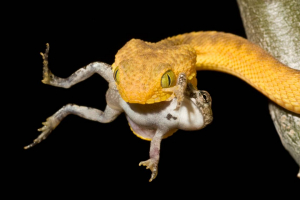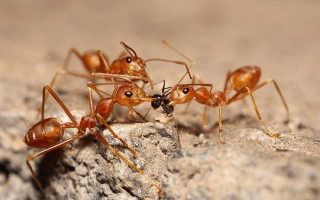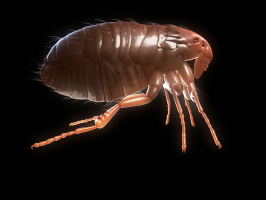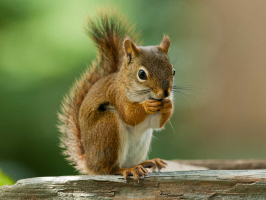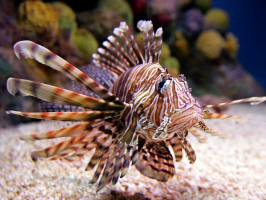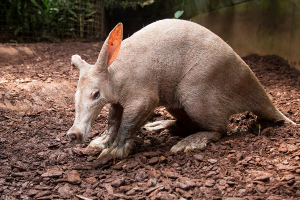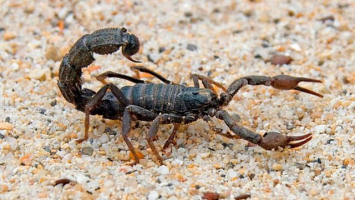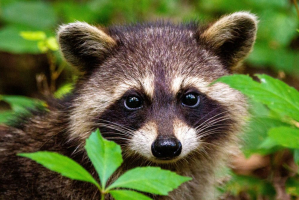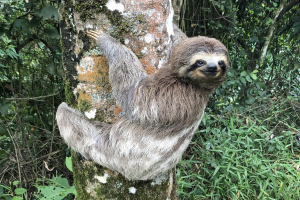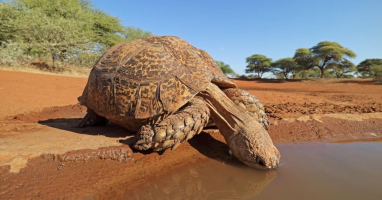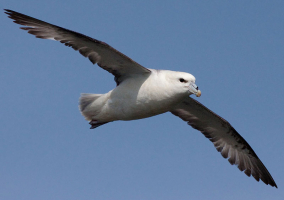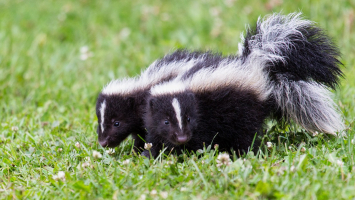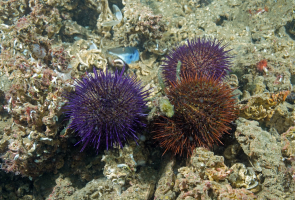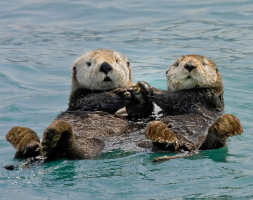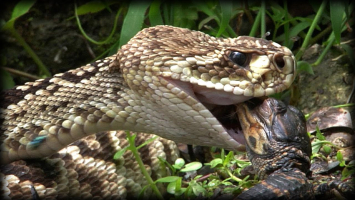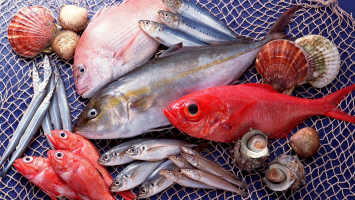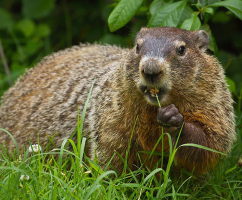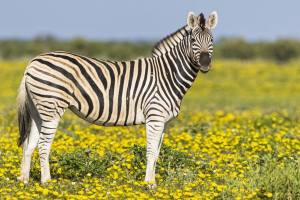Top 9 Predators of Mosquitoes that Eat Mosquitoes
Mosquitoes have a number of predators that collectively can exert some influence on reducing mosquito populations. However, with very few exceptions, predators ... read more...generally have little effect on reducing the mosquito population over a large area. So, what are some predators of mosquitoes that eat mosquitoes?
-
In addition to being a mosquito's natural predator, dragonflies are an exciting and distinctive species of insect. Due to their alleged capacity to eradicate thousands of mosquitoes, dragonflies are frequently referred to as "mosquito hawks." Like most natural mosquito predators, dragonflies eat their fair share of mosquitoes, but not enough to have a meaningful impact on mosquito populations in the wild.
However, one characteristic that sets the dragonfly apart from most other predators is the fact that mosquito larvae are one of their main food sources when they are in the aquatic larval stage. Since they prefer to eat during the day as adults, when most mosquitoes are hiding in shrubs and timberlines, they will actually cause the most harm to mosquito populations during this period, which can last up to six years. These ravenous and fearless small predators, known as dragonfly naiads, will take on practically any aquatic creature, including other naiads.
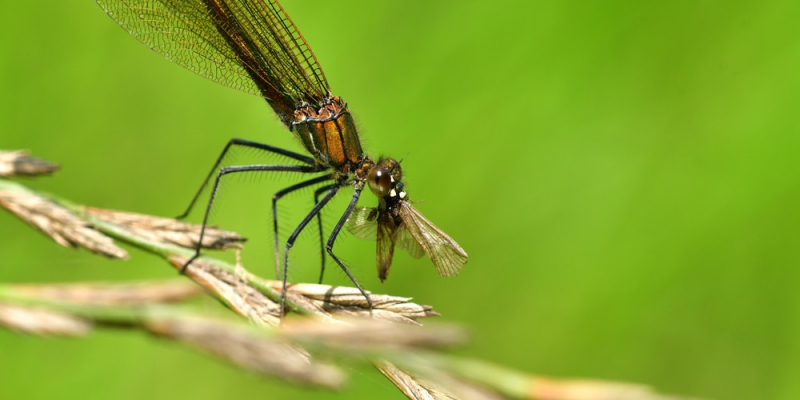
Photo: https://www.reconnectwithnature.org/news-events/the-buzz/too-many-mosquitoes-in-yard-attract-dragonflies/ 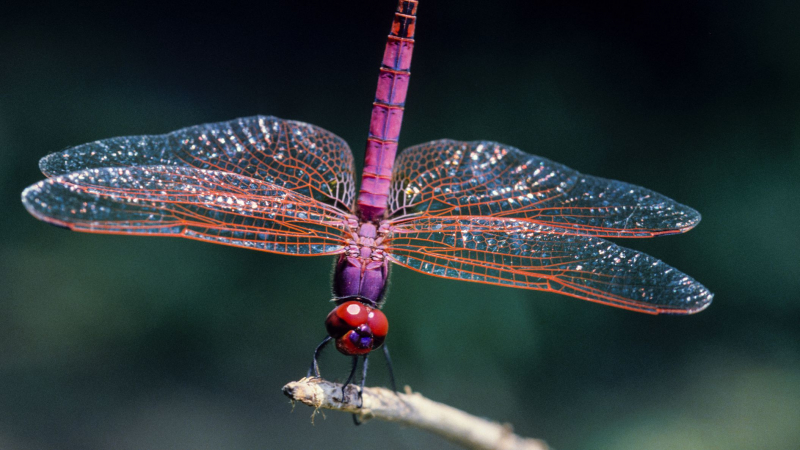
Photo: https://www.treehugger.com/how-tell-difference-between-dragonfly-and-damselfly-4864536 -
Purple Martin is a classic example of a predator of mosquitoes that eat mosquitoes whose capacity to decrease mosquito populations has frequently been drastically overstated. Yes, they do eat mosquitoes, but not nearly enough to be considered an effective method of reducing mosquito populations. The founder of the Purple Martin Conservation Association (PMCA), ornithologist James Hill, states in a quote from the AMCA's frequently asked questions page that "the number of mosquitoes that martins eat is relatively little, and they certainly don't manage them." In-depth research has revealed that the percentage of mosquitoes in martins' diet ranges from 0 to 3 percent.
In reality, during the day, purple martins typically eat larger flying insects like June bugs, moths, bees, butterflies, wasps, and, regrettably, dragonflies, another creature that naturally preys on mosquitoes. Mosquitoes are typically most active in the hours before and after dusk, when our friends the martins are typically feeding in the trees, well above the most of mosquito activity. Although the purple martin is a stunning bird, it is likely that it would prefer to catch a nice, juicy Japanese beetle or any other large-bodied flying bug over a thin little mosquito, like other natural predators that occasionally eat mosquitoes.
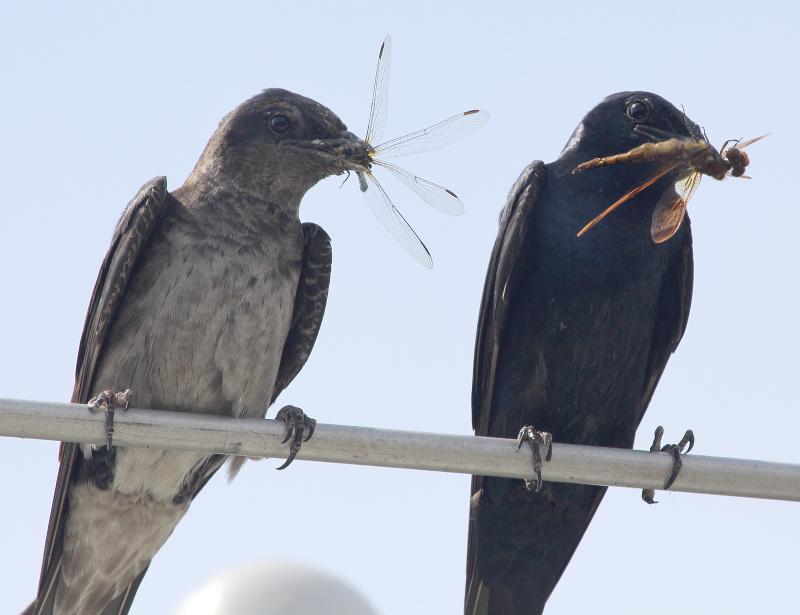
Photo: https://birdsofnewengland.com/2014/07/15/what-do-purple-martins-eat/ 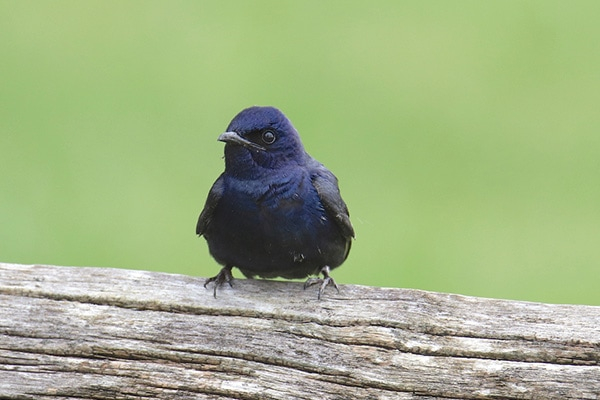
Photo: https://www.birdinformer.com/what-do-purple-martins-eat/ -
Another naturally occurring mosquito predator frequently referred to as a voracious feeder of mosquitoes, is the bat. In truth, bats are opportunistic feeders like other natural mosquito predators. This essentially means that they will consume any accessible food source, even mosquitoes, but they do not go out looking for them explicitly. In fact, research on bats in the wild has revealed that most of the insects they eat are beetles, wasps, and moths, with mosquitoes making up less than 1% of their overall diet.
Most bat species thrive on an insect-based diet. Per bat typically consumes 6,000 to 8,000 insects each night, and they can consume up to 1,200 mosquito-sized insects every hour. Undoubtedly, their taste for mosquitoes improves the comfort of a backyard. Bats are opportunistic, and everyone profits from their lack of discretion. Crop-destroying moths, cucumber beetles, flies, and gnats are a few of their preferred prey. Their area of expertise is organic insect control.
Bats are quite helpful tiny critters, even though some people think they are ferocious mosquito eaters. Bats provide us with wonderful service by consuming a significant quantity of other flying insects and thereby aiding in the management of some harmful and dangerous pests, despite their undeserved reputation as something to be feared.
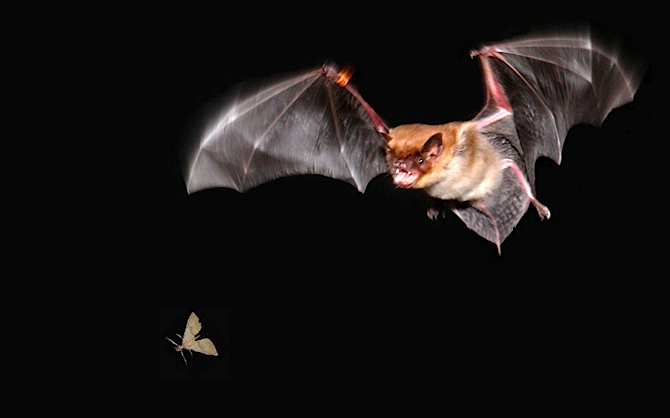
Photo: https://www.wired.com/2010/04/bat-flight-evolution/ 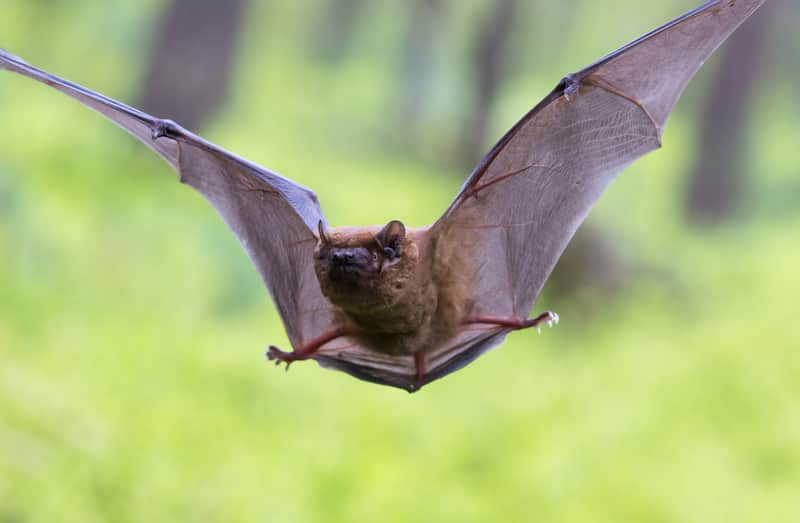
Photo: https://www.terminix.com/blog/education/do-bats-eat-mosquitoes/ -
The Blackpoll Warbler is a small member of the Parulidae family of New World warblers, also known as wood warblers. It is one of the predators of mosquitoes that eat mosquitoes. Their breeding habitats include the majority of Canada and Alaska in the summer. They migrate to South America for the winter and set a songbird record for one of the longest non-stop overwater journeys. Their name derives from their high-pitched vocalizations, black and white forehead, and crown.
Blackpoll Warblers have streaky underparts and black and white plumage with white wing bars. They frequently reside in mountainous forests or scrubland at higher altitudes. Nevertheless, some people also reside close to coastal regions, tundra, and coniferous forests. They are mostly insectivores, eating webworms, ants, gnats, aphids, spiders, and sawflies in addition to mosquitoes. They will hover over the ground and fly through tree branches while hunting until they spot their meal.
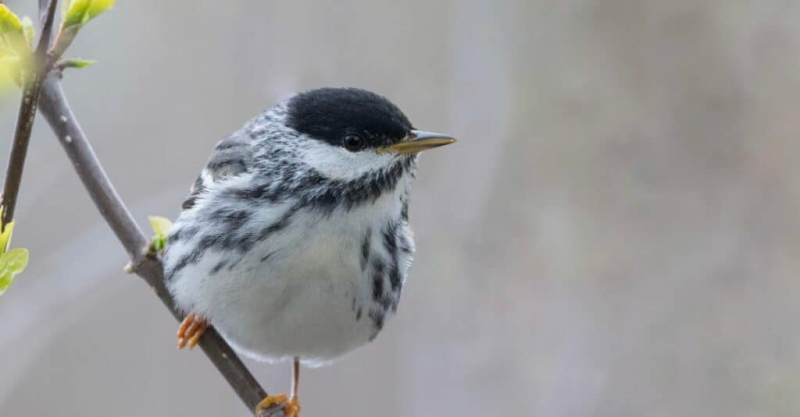
Photo: https://www.audubon.org/field-guide/bird/blackpoll-warbler 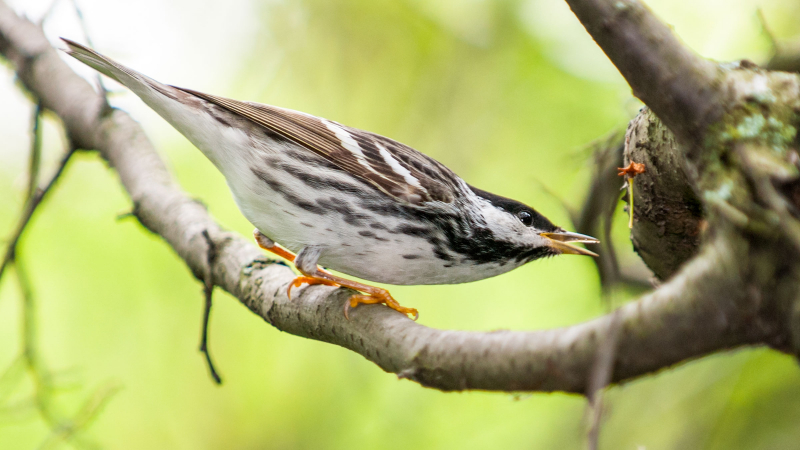
Photo: https://www.allaboutbirds.org/guide/Blackpoll_Warbler/lifehistory -
In North and South America, the Muscovy Duck can be found in both wild and residential settings. Feral populations of these animals are now found in Hawaii, Louisiana, Florida, and some other states. Native Americans originally bred them in South America. They are also known as pato casero, or "backyard duck," and pato mudo, or "silent duck," in Spanish. An ancient term used to identify the region around Moscow is "Muscovy."
Some sources suggest that the term derives from a trading business that moved the ducks between the New and Old Worlds. Muscovy ducks are a big species that can grow up to 30 inches long and weigh around 15 pounds. Their normal plumage consists of feathers that are black and white, with pink or red wattles surrounding the bill. Muscovy ducks consume a diverse range of foods, including grasses, fish, amphibians, reptiles, crabs, and insects.
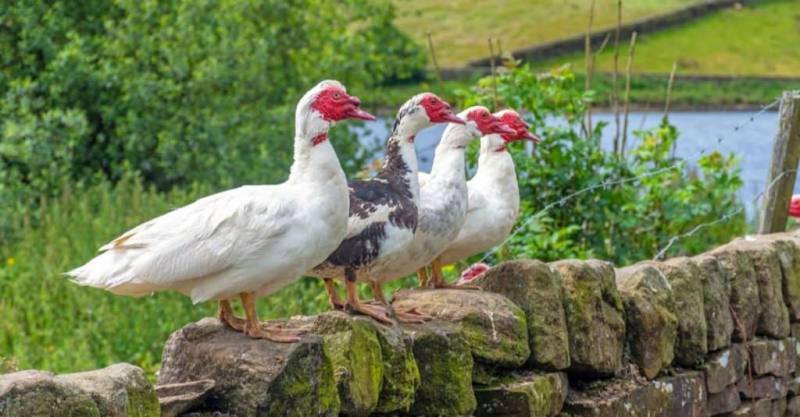
Photo: https://www.dartagnan.com/what-is-muscovy-duck.html 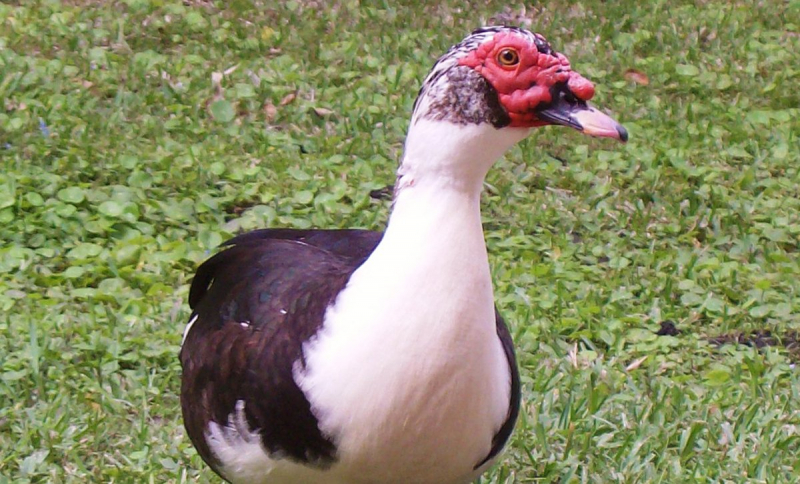
Photo: https://a-z-animals.com/blog/what-do-muscovy-ducks-eat/ -
The American robin, hermit thrushes, solitaires, and fieldfares are all thrushes, as are bluebirds, and they all have the same kind of diet. Bluebirds consume flying insects, including moths, termites, and mosquitoes, depending on the season, habitat, level of activity, and general availability of food.
One of the three species of songbirds in the Turdidae family is referred to as a "bluebird." The mountain bluebird, western bluebird, and eastern bluebird are among the species. The United States, Mexico, Canada, and Central America are just a few of the countries in North America where they are found. Bluebirds continue to be well-liked by hobbyists and the general public since they are extensively featured in popular media and cultural customs.
The medium-sized species all have blue or blue and beige plumage. Bluebirds favor grassland habitats with few trees as their primary habitats. They construct their nests in tree cavities or man-made nesting boxes and are known to exhibit very territorial behavior. Despite this, populations have decreased recently as a result of competition from invading house sparrows and starlings. They consume a wide range of insects in addition to mosquitoes, and they particularly like mealworms. In times of scarcity, insects will also consume fruits and berries.
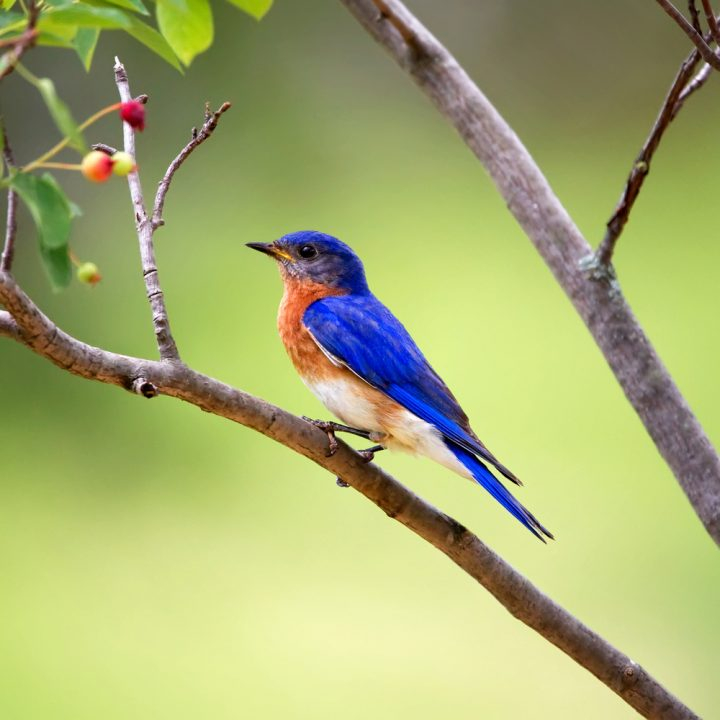
Photo: https://www.gardensall.com/birds-that-eat-mosquitoes/ 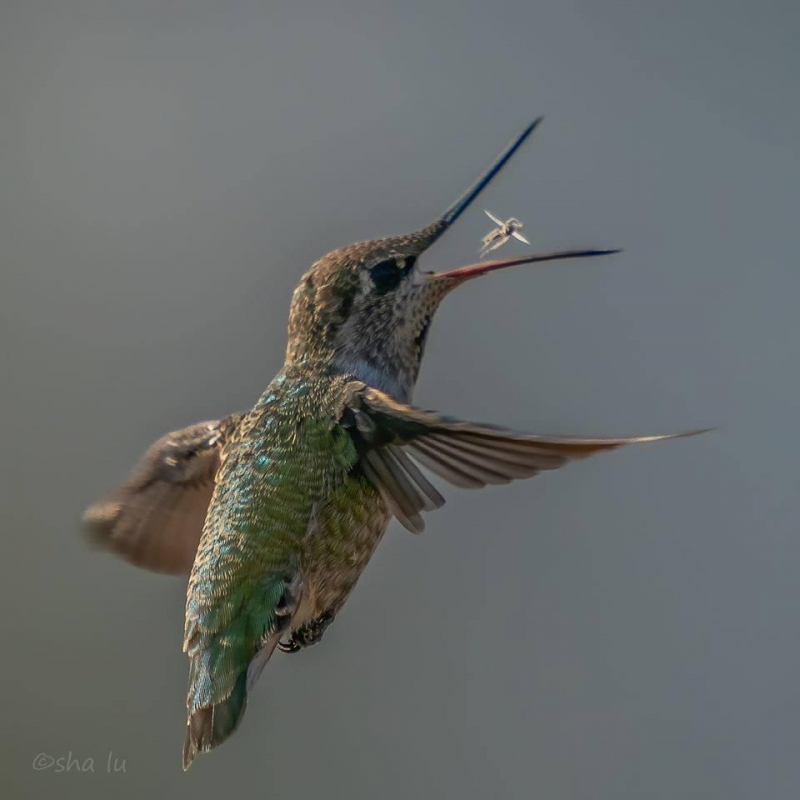
Photo: https://blog.nwf.org/2020/08/meet-the-squad-of-mosquito-eating-species/ -
Tadpoles, which are the young of frogs and toads, are frequently hailed as being effective mosquito repellents. In truth, even when they once more devour their due share, it is still insufficient to make a significant dent in the enormous mosquito populations. Mosquitoes are often only eaten by frogs and toads when they have matured from tadpoles to adults. Although some larger species occasionally eat mosquito larvae, most tadpoles are herbivorous and mostly eat algae and plants.
Frogs at their tadpole stage do nothing to eradicate mosquito larvae, in contrast to dragonflies. Tadpoles and adults both eat plants and algae, despite the fact that they may coexist in the same area. When frogs reach adulthood, though, their one and only desire are to devour bothersome mosquitoes. Just keep in mind that adult frogs eat a variety of insects, so if there are other bug food sources nearby, they might not concentrate only on your mosquito problem. Frogs alone won't be able to solve a big mosquito problem either due to the amount of food they devour. Despite this, frogs are still a simple and sustainable technique to assist manage a mosquito problem.
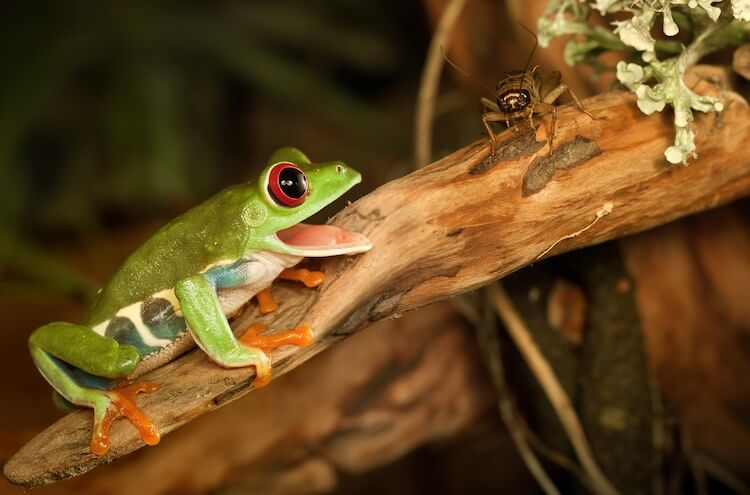
Photo: https://www.everythingreptiles.com/what-do-frogs-eat/ 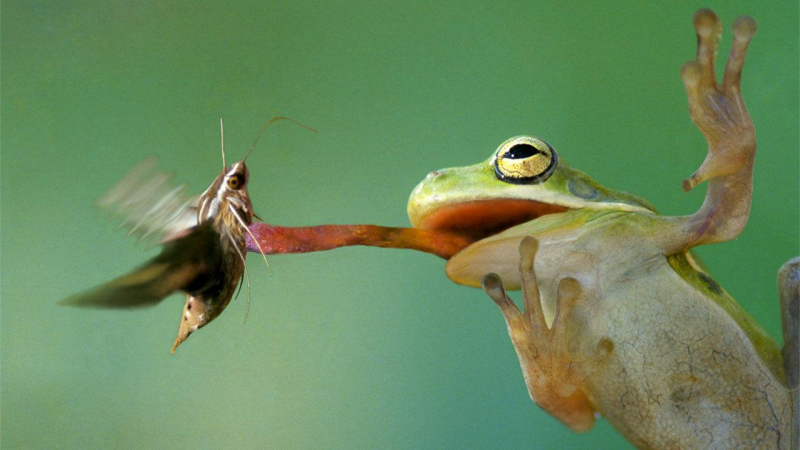
Photo: https://www.animalwised.com/what-do-frogs-eat-feeding-pet-frogs-3193.html -
The most prevalent hummingbird in North America is the ruby-throated hummingbird. They are easily recognized by their striking emerald green head, wings, back, and tail. Males have a ruby-red neck patch, while females have a white throat patch. Plant their preferred flowers in your garden to entice these lovely birds. Although they frequently visit blooms that are purple, yellow, or blue, they tend to favor long, tubular flowers that are red or orange. They consume nectar from more than 30 different types of flowers, such as columbines, petunias, salvia, nasturtiums, bee balm (which has the advantage of being disregarded by rabbits and deer), phlox, and salvia.
Additionally, you can entice these hummingbirds by placing specially made feeders in your yard that are filled with crystal-clear sugar water. They consume tree sap as well. However, insects like mosquitoes, fruit flies, gnats, tiny bees, spiders, and tiny caterpillars may make up as much as 60% of their diet. They have been known to solely eat insects when spending the winter in Costa Rica and Mexico because they might not have access to flowering flowers.
Ruby-throated hummingbirds are able to soar over open water for hundreds of kilometers without stopping. They can beat their wings up to 75 times per second! For their incredibly fast metabolism to be maintained, they must eat almost constantly. The population of mosquitoes can also be reduced by other migratory songbird species. The varieties we've mentioned above, nevertheless, are some of the most voracious mosquito eaters. Although regular songbird visits to your garden won't fully eliminate your mosquito problem, their presence should significantly reduce the number of mosquitoes. These vibrant, lovely guests will frequently serenade you, giving you a musical present as well.
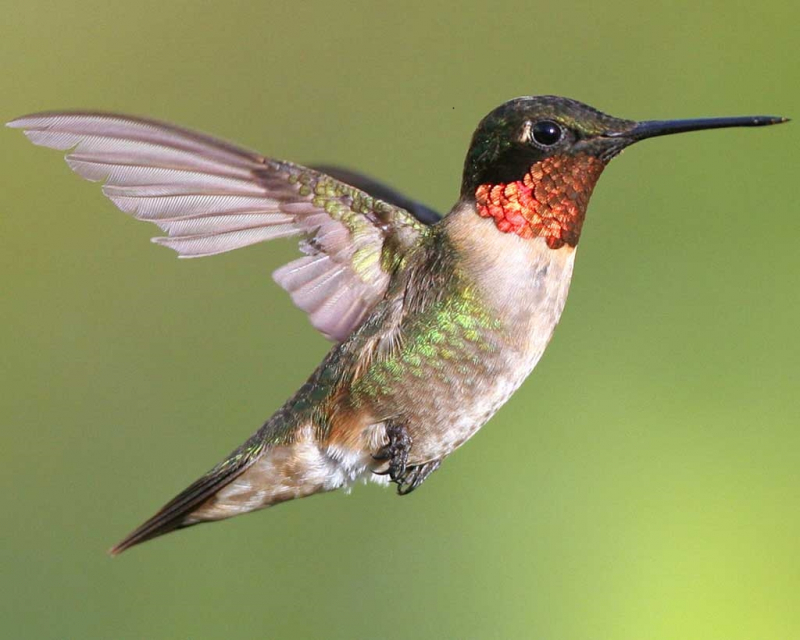
Photo: https://www.wild-bird-watching.com/humming-birds.html 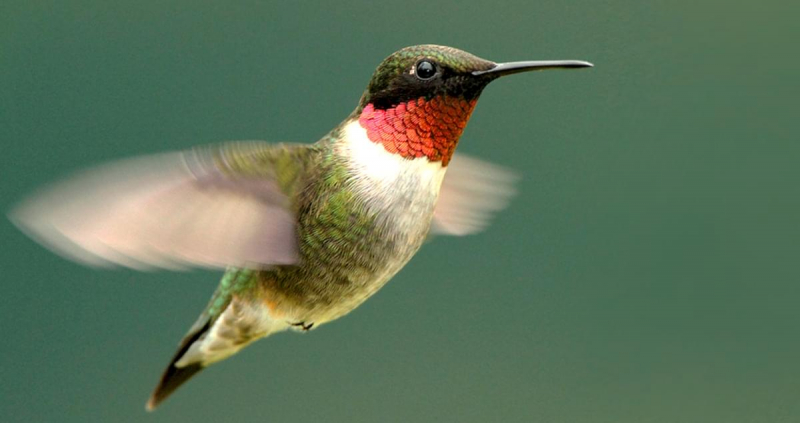
Photo: https://www.allaboutbirds.org/guide/Ruby-throated_Hummingbird/lifehistory -
Spiders should be on the list of "creatures to avoid" for a lot of people. These sneaky, unsettling spiders invade our living areas as if they were dropping down out of thin air from shadowy regions. When you see a spider, some of you flee and hide when you see a spider. Some people will dash for the closest shoe or tissue. The majority of spider species do not pose a threat to people, despite the fact that some, like black widows and tarantulas, should be dreaded. In fact, if spiders didn't exist, insects would rule the globe.
Generally speaking, anything that becomes entangled in a spider's web will be eaten. A mosquito caught in a spider's web will undoubtedly end up as the spider's next meal. Despite this, the great majority of spiders do not choose any particular insects over others. However, two extremely distinct spider species have been found. These spiders are regarded as a predator of mosquitoes that eat mosquitoes. According to research that has been based on prolonged observation of these two species, they constantly seek out and favor mosquitoes above other insects.
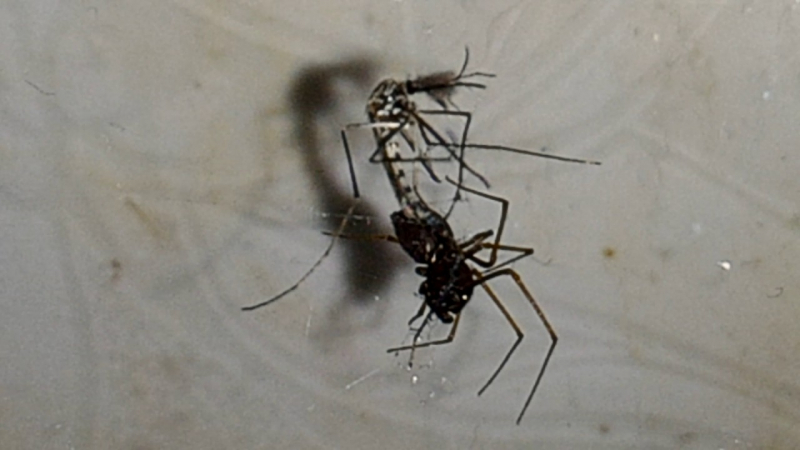
Photo: https://www.reddit.com/r/pics/comments/57ei9z/spider_eating_a_bloodfilled_mosquito/ 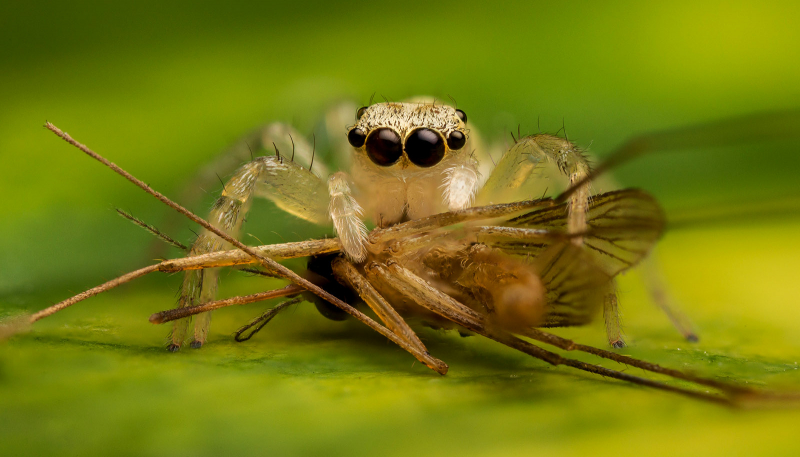
Photo: https://www.futurity.org/jumping-spiders-mosquitoes-2739232/











